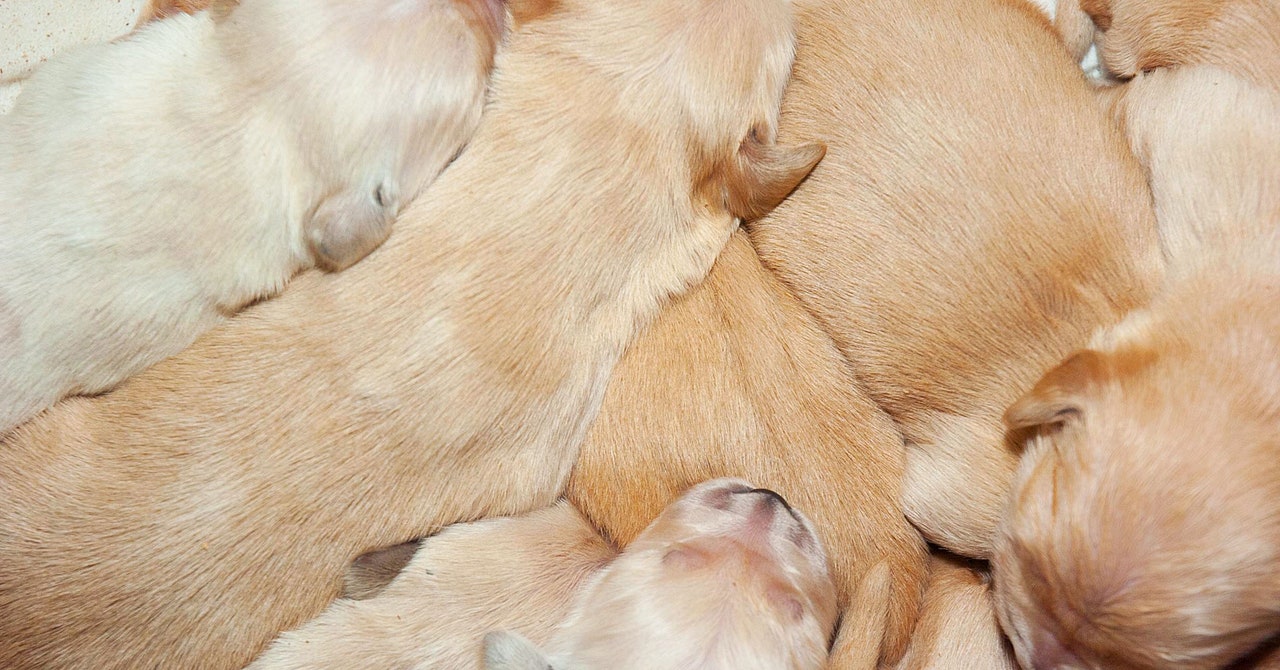
Flash isn’t your average puppy. A yellow Labrador, named after one of the first British guide dogs from 1931, she is playful, affectionate, and loves learning new commands. Flash is enrolled in an elaborate program herself, one that takes two years and nearly $50,000 to train her to become a guide dog for the blind and visually impaired. Her temporary caregiver Melanie will make sure she maintains a healthy routine: twice-daily walks in different environments, a train ride here, a trip to a mall there to get used to other people. But Melanie has already accomplished one of her most important tasks: When Flash was five months old, she swabbed the puppy’s cheek and mailed the saliva away to a team of researchers that is trying to decipher the link between dog genetics, health, and behavior.
Around half of the dogs that are bred for guiding don’t end up doing that work because of health or behavioral problems. Modern dogs suffer from many genetic diseases, a side effect of keeping breeds separate and selecting them for desirable traits. Some of these purebreds might have the right looks, but not the right temperament, to become a working dog. But what if breeders could predict what makes a good guide dog and select against undesired traits, ensuring they aren’t passed on to the next generation?
More than 500 traits analogous to human genetic conditions have been described in dogs—both species can suffer from cancer, eye disease, or dysplasia of the hip, to name a few. Cheap DNA tests for canines can screen for changes, known as mutations, in a single gene. The causes of many other conditions, however, are more complex. They can be linked to multiple genes or to environmental factors like exercise, food, dust, or mold spores. “We definitely want to get a handle on complex traits,” says Tom Lewis, head of canine genetics at Guide Dogs. The charity breeds around 1,000 puppies a year, which spend their first year in the homes of volunteers before entering formal training.
Before joining Guide Dogs in January, Lewis worked at the Animal Health Trust and the Kennel Club in the United Kingdom, where he studied the genetic risk of hip dysplasia in breeds registered with the club. Dysplasia is one of the hereditary conditions that can be difficult to diagnose and treat. It is a malformation of the hip joint that develops during growth, though traumatic injury, being overweight, or lacking muscle strength can worsen the condition. For example, puppies raised in homes with hardwood flooring may build less muscle mass in their legs—they can’t get traction on the floor, and slip and slide around, which is hard on their little joints. The constant pain can eventually turn into lameness and arthritis in grown dogs, making them unsuitable for guiding or assisting people with disabilities.
Good health is key for guide dogs, but temperament is just as important. They need to lead their owners around obstacles and other people while staying calm and obedient. They need to resist chasing after squirrels or getting too excited when meeting other dogs. Not every breed has what it takes. For example, the typical cocker spaniel is intelligent, affectionate, and a great option for families, but it is also too excitable. “Even if you give them the same training, you would never expect a spaniel to be a guide dog. They’re far too temperamentally unsuited, and that’s probably a genetic thing,” says Lewis.


